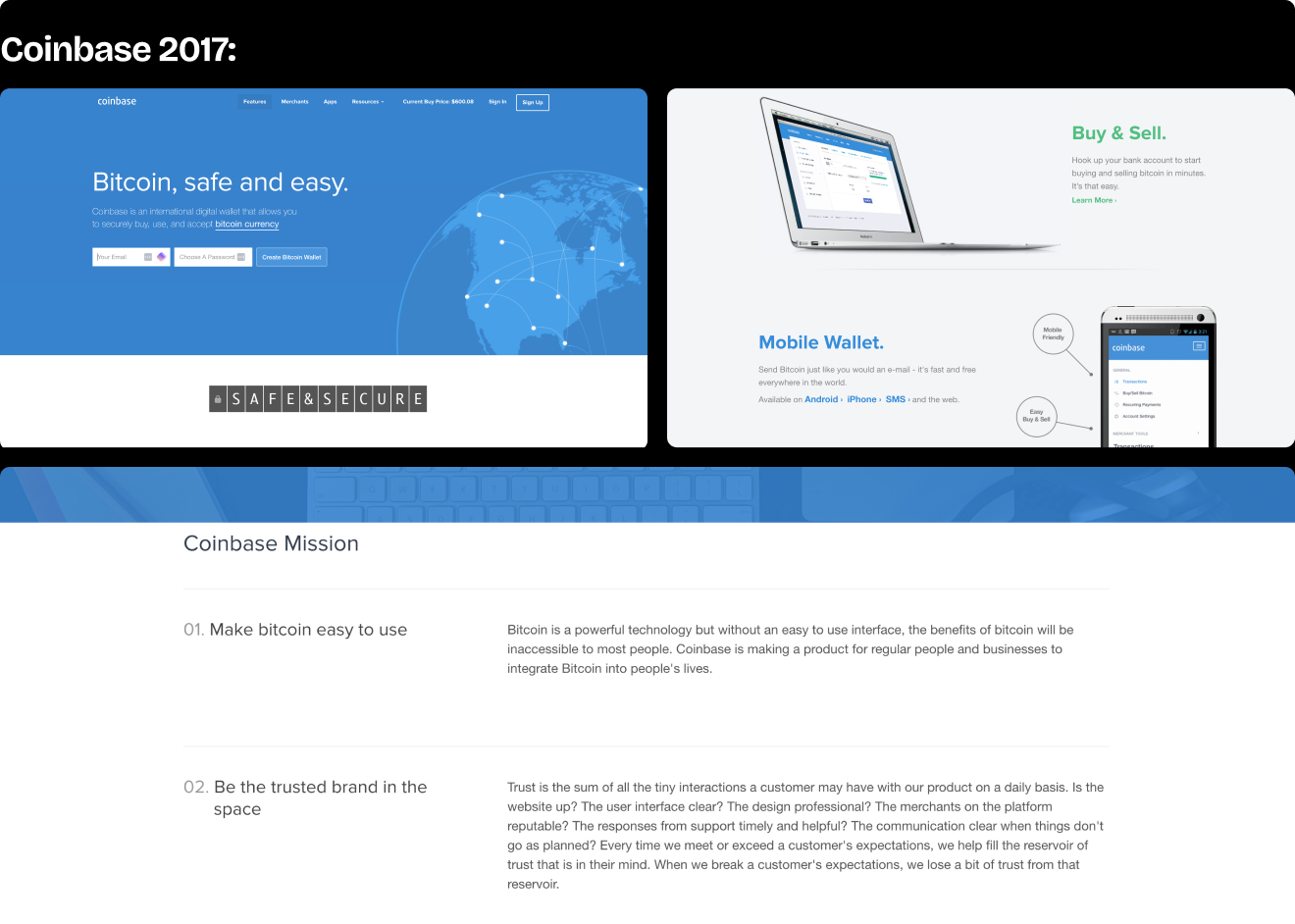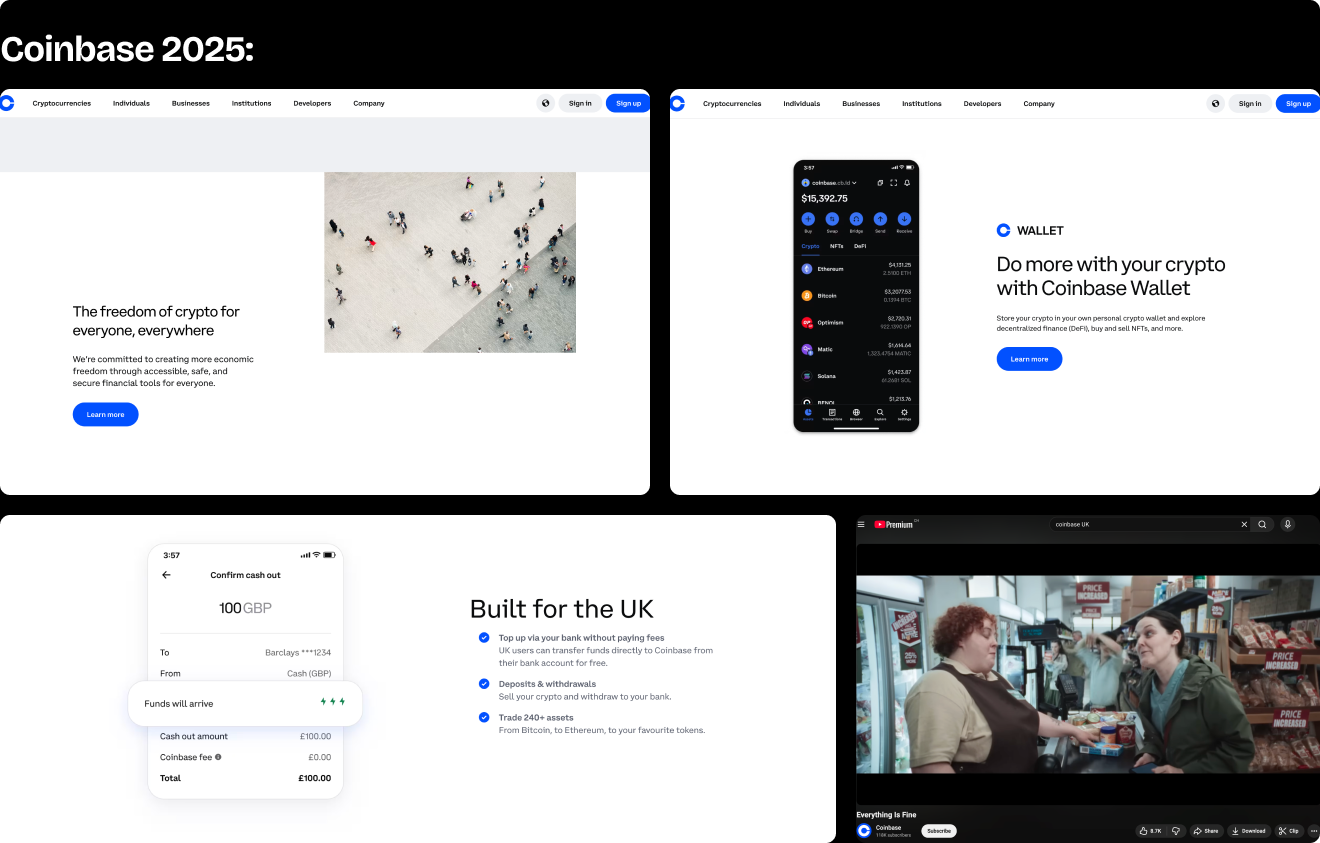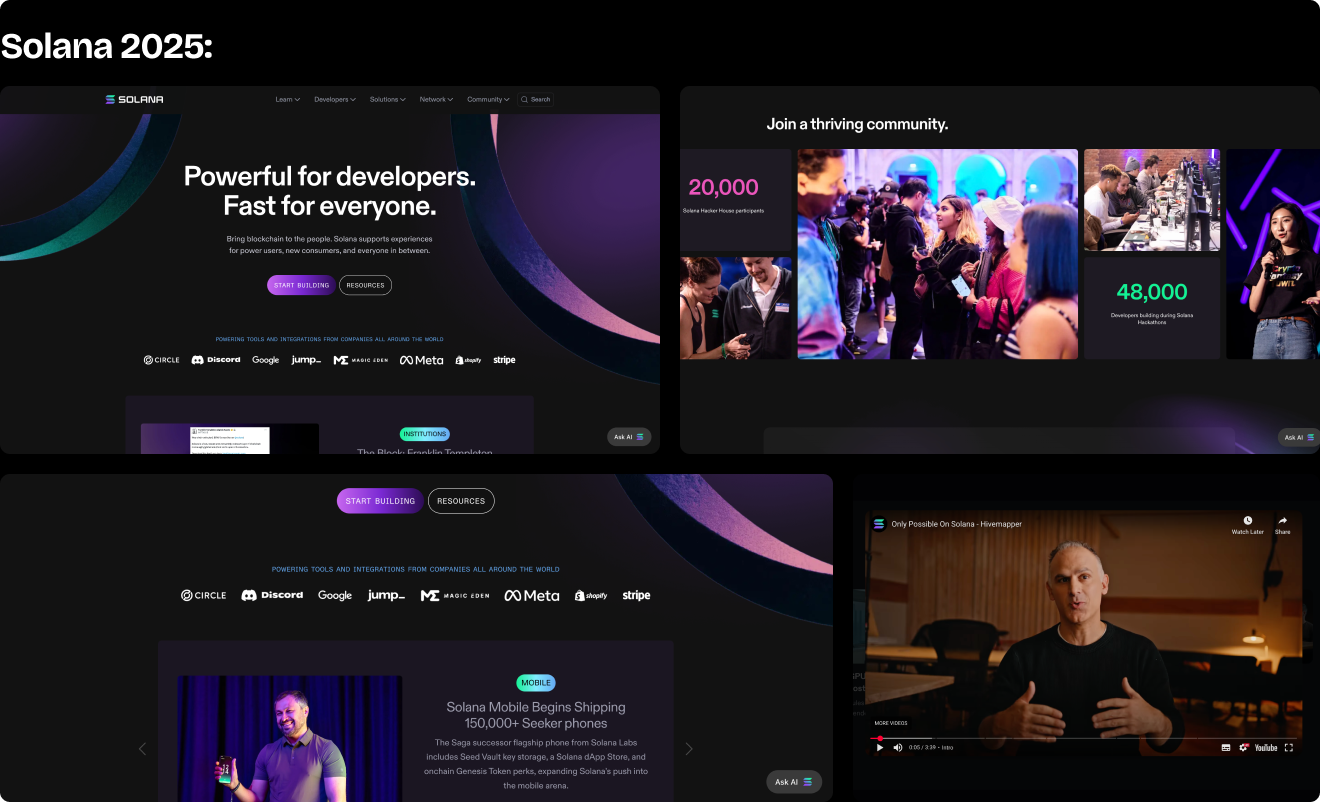Related Articles


.png)
Every Web3 brand begins with a dream, but at some point, the market starts asking for receipts.
Projects launch with bold visions, strong manifestos, and playful brand worlds built on illustration, emojis, and abstraction to communicate possibility and community. This aspirational, symbol-heavy approach to Web3 branding works brilliantly to rally early believers.
But as projects mature, this visual language starts creating friction. Audiences' expectations evolve: Institutional prospects need proof, not possibility. Strategic partners want case studies, not aspirational symbolism. The Web3 brand evolution from vision to trust is strategic, mirroring the project’s growth from idea to reality.

At launch and before, you’re selling a possibility, not a proof-of-concept. Your product might not exist yet. Your ecosystem is nascent. Your token hasn't launched. This is precisely why symbols, illustrations, and emoji-based branding are so powerful in the early days.
Abstraction is flexible—it allows your brand to represent something not yet fully defined. It's aspirational, speaking to ideals like decentralization, freedom, and revolution rather than concrete specifications. And it's inclusive, inviting community participation and interpretation in ways that literal, concrete branding simply can't.
This phase is essential for building narrative momentum before the product exists, creating space for people to project their own vision onto yours. The best early-stage crypto branding knows how to harness the power of abstraction to build early belief.
But the game changes once you've shipped the product, launched the token, and pushed updates. You're not pitching possibility anymore; you're proving your vision with tangible progress. And your brand needs to reflect that shift.
Unfortunately, as Web3 projects mature, many don't evolve their brands. The technology ships, the ecosystem grows, the partnerships happen, but the visual brand stays frozen in launch mode. What worked brilliantly at launch—the abstraction, the aspirational symbolism, the open-ended possibilities—starts to create friction as the project enters a new chapter.
The audience changes too. Early adopters and believers give way to institutions, strategic partners, and regulators who need more than promises. This early branding wasn't wrong—it was right for that moment. But as the project matures, the brand needs to mature with it, evolving from symbolism to substance, from abstraction to evidence, from hype to trust.
You can see this evolution reflected visually and strategically across successful protocols:
Coinbase serves as a masterclass in blockchain branding evolution done right.
In 2017, their brand leaned heavily on flat illustrations, globes, and symbols representing the vision of global crypto adoption. Fast forward to 2025, and those abstractions have been replaced by authentic photography spotlighting the diverse real people already benefitting from Coinbase products.


The brand architecture has been streamlined across Coinbase's consumer and institutional offerings, creating a cohesive experience that builds trust. Copy has shifted from evangelizing the crypto revolution to clearly communicating the benefits of Coinbase's suite of products in language that resonates with mainstream audiences.
The result is a brand that feels like a natural extension of the company's progress rather than a disconnected "rebrand" that leaves early supporters behind.
Solana's transformation tells a similar story, but with its own distinct flavor.
Early brand imagery featuring abstract 2D illustrations has given way to photorealistic 3D environments and textures, signaling a more mature, sophisticated brand. Solana’s initial focus on publicizing the technical vision and roadmap has shifted to spotlighting major partnership announcements, ecosystem growth, and real-world use cases.
Where they once emphasized network speed and future potential, they now supplement that promise with data visualizations, metrics, and case studies proving Solana's real-world performance and traction.


For both Coinbase and Solana, the evolution from vision to substance has been gradual and closely tied to project maturity. Importantly, while the execution has become more grounded and evidence-based, the core spirit and personality of each brand has remained consistent.
Coinbase is still positioned as an inclusive, trusted guide to the cryptoeconomy. Solana still hits hard on its technical advantages and developer-centric culture. The brands have evolved, but they haven't abandoned the essence that made them resonate in the first place.
As Web3 scale, the most successful ones lean into real-world elements that serve as trust signals.
These are strategic responses to a new stage of growth, answering the questions your evolved audience is actually asking. An effective blockchain brand strategy recognizes that what your project needs to communicate has fundamentally changed.
The strongest Web3 brands recognize this inflection point and know when to pivot their narrative from what could be to what is. They understand that as their technology and community mature, their brand needs to mature alongside them, providing the evidence that replaces early narrative promises.
Many Web3 projects make the mistake of clinging to a "vision" identity long after that phase has passed. Their brands say "maybe, someday" while their tech is delivering real value in the here and now. That disconnect undermines trust at the exact moment it matters most.
Others go the opposite direction, adopting a buttoned-up, "serious business" aesthetic before they've built the track record to back it up. If your brand is too far ahead of your reality, you risk coming off as inauthentic or overreaching.
The most effective crypto branding strategies evolve in sync, letting their brand mature naturally alongside their underlying technology and community. The best Web3 design agencies understand that in an industry moving at warp speed, regular brand iteration is a growth imperative.
So take a hard look at where your project is today and where you want it to go. Knowing when to rebrand your Web3 project comes down to honest self-assessment.
Is your brand still living in the land of pure potential, or is it grounded in the traction you're gaining every day? Are you relying solely on hype and buzz, or are you reinforcing it with real substance and social proof?
Answer those questions honestly. Then act on them.
Because in Web3, your brand either evolves with your reality or becomes a liability. The projects that win long-term are the ones that know when it’s time to deliver on a dream.
If your tech has evolved but your brand hasn't, that gap is costing you. Let's talk.
Build the future of Web3 with people who get you. No suits required. Memes encouraged.